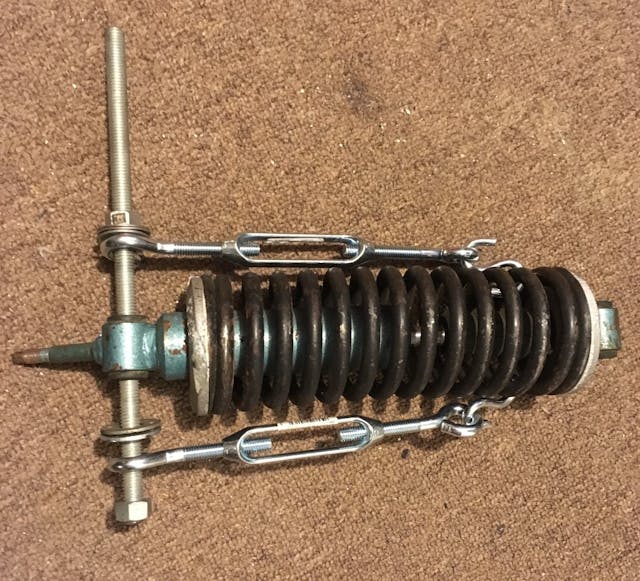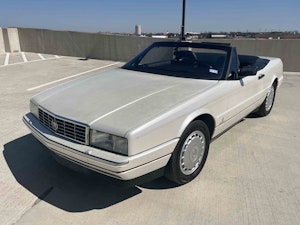Media | Articles
5 scary scenarios DIYers face
Halloween is right around the corner, and any number of scary ghouls and goblins will soon be at your door asking for sweet treats. The holiday got us thinking about DIY experiences that don’t leave our minds so easily. A few projects still keep us up at night, and the thought of repeating certain procedures can provoke a cold sweat. We aren’t saying cars are cursed or possessed—we’ll leave that to the movies—but we all know at least a few vehicles for which it was hard to prove otherwise.
From losing tools to stripping threads, here are the scariest scenarios we’ve encountered in the garage.
Using a spring compressor
The McPherson-strut front suspension design has a lot going for it, like easy installation and cost-effectiveness. Sadly, changing springs or dampers in McPherson struts can be a terror. A spring this powerful is essentially a pipe bomb, and cheap or home-fabricated spring compressors that underestimate the spring’s stored tension are legitimately dangerous. Just the thought of hearing a creak from the spring compressor and seeing a spring shoot off at full force gives us nightmares that would make most horror flicks look tame.
Discovering rust under a paint bubble
You would never pick at a scab, but sometimes you can’t help but give a light poke at that discolored spot on the quarter panel of your classic. Next thing you know, your finger has promoted inner fender to the prestigious status of outer fender. The damage only gets worse from that moment: Iron oxide takes over, a pestilence that no spooky campfire story could ever conjure. Rust is a threat that hangs over everything in your garage. You’ll start seeing the brown-ish red everywhere, until even your mixed drink seems to include red rum. It can drive a man insane, that rust.
Losing a bolt
We all know what it’s like when the bolt or tool that you just had in your hand is—poof—gone. A portal to the fifth dimension opened, swallowing that one small but critical piece of your project. The thought of where that piece of hardware went will haunt you. I’m not scared of Casper, but I am terrified of where that piston pin circlip might have gone.
Stripping a bolt
At last, final assembly. Your workbench is covered in perfectly clean, ready-to-assemble parts. You painstakingly kept all the threads of all your fasteners clean, but somehow a hard-to-reach bolt that only requires 35 foot-pounds of torque just … won’t … tighten. All of a sudden, “righty-tighty, left-loosey” becomes “righty loosey, lefty also loosey.” The split second your wrench meets no resistance, the horrors of dealing with the consequences come into sharp focus.
Burning through paint

The paint on a vehicle can get really shiny if you remove enough of it to eliminate scratches, scrapes, and other imperfections. However, the mere thought of burning through the paint of their beloved classics has kept thousands of owners from so much as looking at an electric polisher. Thanks to modern compounds, this automotive horror story no longer needs to strike fear in your heart. Random-orbit polishers and diminishing-grit compounds allow you to be gentler with paint than ever before, even if the process requires a certain touch and understanding, and the fear of burn-through lingers in the room like a ghost.
What would you add to this list? Let us know in the comments below.
***
Marketplace
Buy and sell classics with confidence
Check out the Hagerty Media homepage so you don’t miss a single story, or better yet, bookmark it. To get our best stories delivered right to your inbox, subscribe to our newsletters.
















You kissed the biggest fear: a car falling off a jack or jackstand.
Not sure about kissing it, but definitely one of my greatest fears!
The day your wife finds a new project car under tarp and behind plywood that’s been there for 3 months. Should have known couldn’t get away with it. Still here it today 2 years later. And of course the spring compressor never again will I do that.
Mine is using my bench grinder/ polisher and the wire wheel grabbing the part from my hand and slinging it across the shop, never to be seen again. Shortly there after grinding through the gloves and instantly cauterizing the wound the it just caused. For some reason this happens to me on a monthly basis.
Scariest is using a spring compressor
How about air compressor blowing on caged bearings? When I worked at a golf course during the winter school break maintaining equipment, we used to change out bearings on the mowers and such. If they were not too worn we’d clean and repack. This was when gasoline was used as a cleaning solvent. Anyway, one manual said do not blow out the bearings to dry them after flushing. So what is a college kid gonna do when you read that? How else are you going to dry the bearings to repack? If you have never done it, don’t. Hold the center race and give the bearing a few squirts of air. God only knows what RPM it gets too but my buddy almost took his eye out as the cage blew apart on the first one we did. OK, why would that be the first one? Well then we got out a face shield and holding others inside a 55 gal drum proceeded to blow apart a few more….great fun. Not really a good idea.
I was mentoring a young man and one session when we were putting his truck back together, he asked “How do I know when these bolts are tight enough?”. Without missing a beat on the task I was working on, I said “The trick is to stop a quarter turn before it strips.”. The look on his face was precious.
We always quipped….tighten it until it breaks, then back it off half a turn. One time, some numbie asked how do you do that?
There’s an old joke about torquing the axle nuts on a Volkswagen Beetle (and probably all their rear engine vehicles). “Tighten it until your voice changes, then take another quarter-turn.”
In the oilfield, it was always “ as tight as you can then another quarter turn…”
The bolt comments struck a note with me. Long ago, 50 years maybe? one of my unofficial mentors with whom I wrenched, told me this idea he had gotten from an old timer. I was a teen or there abouts so everything had to be done quick, the impetuousness of youth I suppose. Anyway the point is this. My guy always said if you are unbolting something…..go slow, back and forth, lots of oil, wire brush off the crud, back and forth, gently, more penetrating oil. Clean the threads. His bottom line was…..if you can unscrew a nut or bolt, isn’t that a heck of a lot better than drilling, trying to rethread. Maybe heat the offending fastener? Do what ever it takes to unscrew rather than break the part. It is pretty much always easier and all in a lot quicker and easier to unscrew anything that deal with a broken something. Probably an over statement of an over simplification but it really is worth going slowly with a fastener than rushing even a bit and snapping something or stripping some threads.
Plastic damage always scares me in my projects. For older cars the parts are rarely available and you can never make damage’s plastic look new again
Stripped fasteners are no fun, but can typically be *relatively* easily addressed with a tap, die or new fastener.
Now, a snapped/broken off fastener or seized fastener can be a nightmare.
Uh, poorly placed or secured car jacks. Being crushed to death is scary.
Definitely not on my top 10 list of how to leave this earthly plane.
Completing a very complex rebuild, such as an automatic transmission, and then finding a crucial part that you forgot to install early in the process.
Sheared off bolts where you can’t get in with a drill to get a stud extractor in.
Finishing your job and having a screw, nut or bolt left over.
Extracting the engine oil using an extractor hand pump with the extractor tube through the dipstick tube and the tube gets wrapped around something in the engine and breaks when you try to pull it out.
The worst thing for me is when I drop a nut, socket, or some other small ithe engine compartment and I don’t hear it hit he floor and I can’t find it.
I was working in a body shop and the guy next to me said he had had his own shop at one time. He was
removing a front strut. I hear this big bang and I swear the car jumped. He was taking out the strut and removed the big nut in the center. He’s lucky he wasn’t seriously injured.